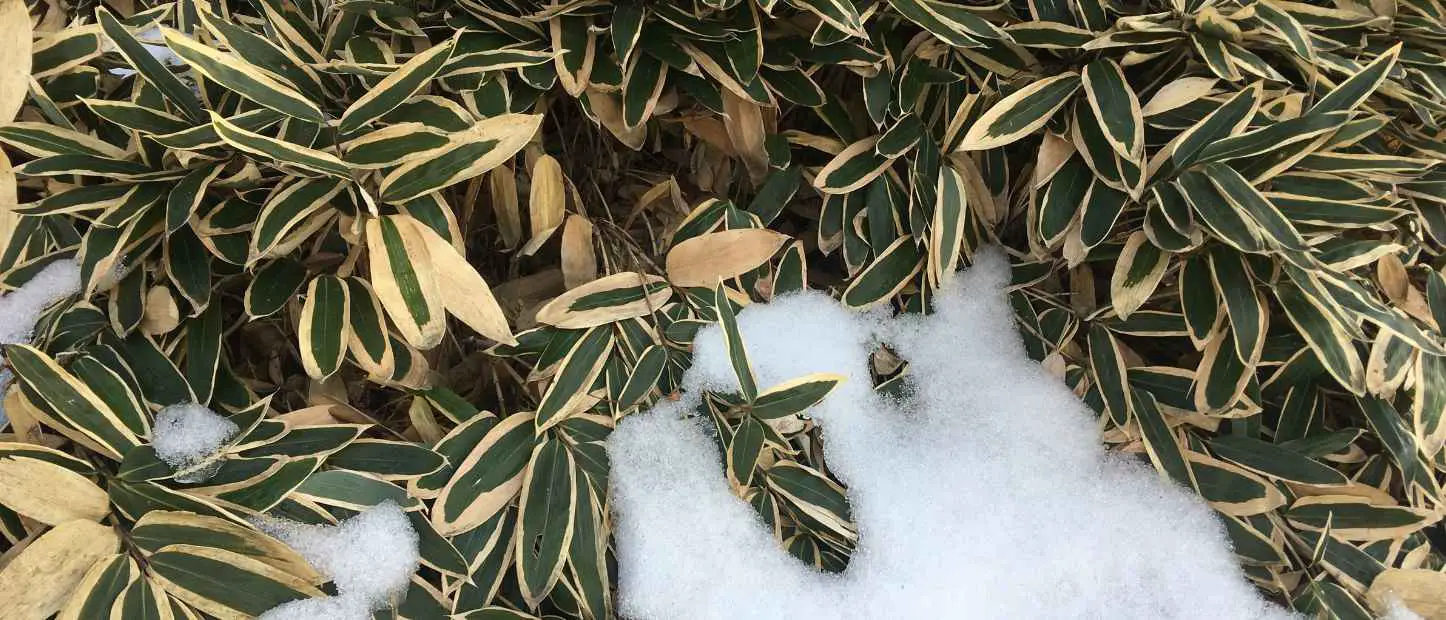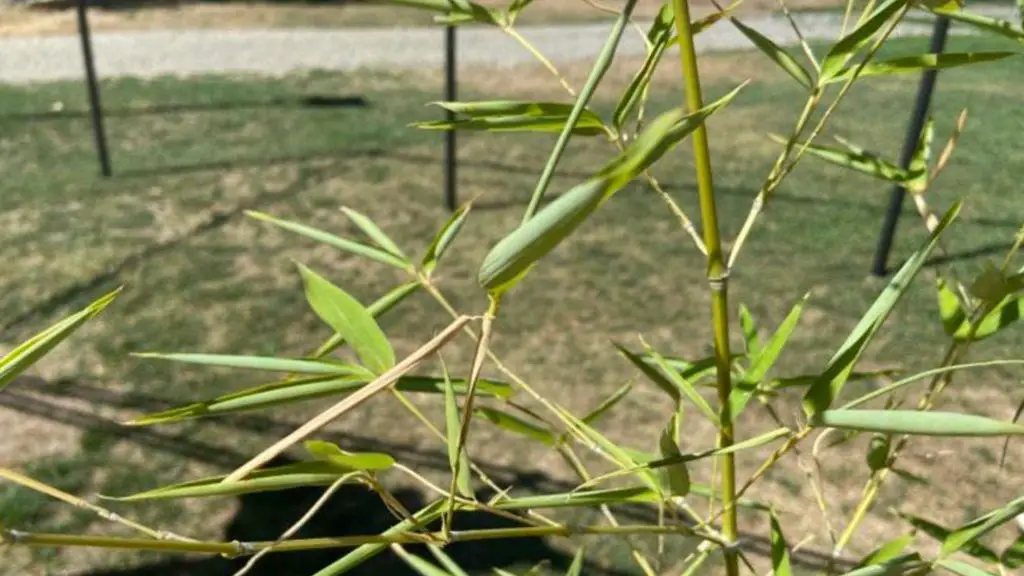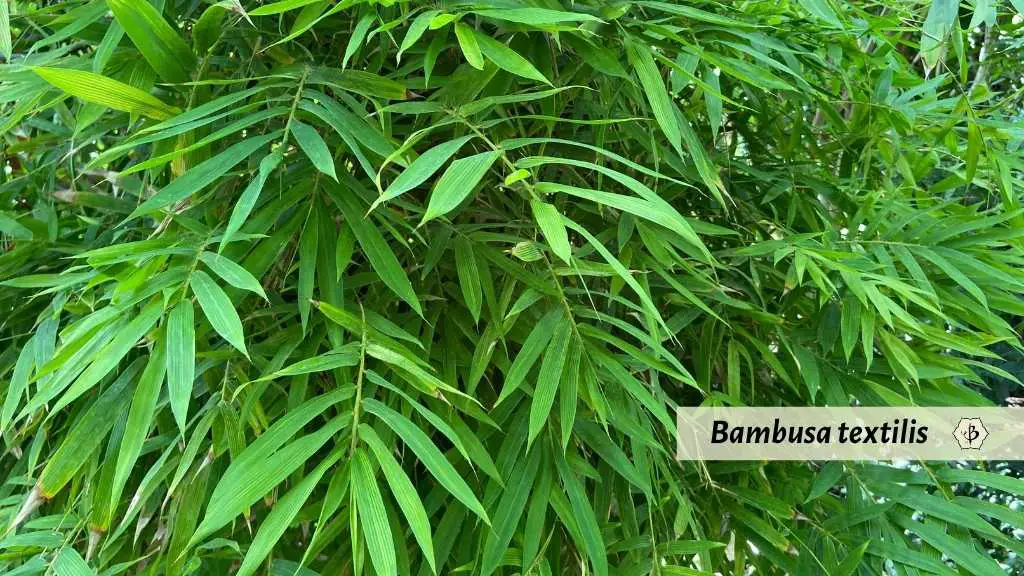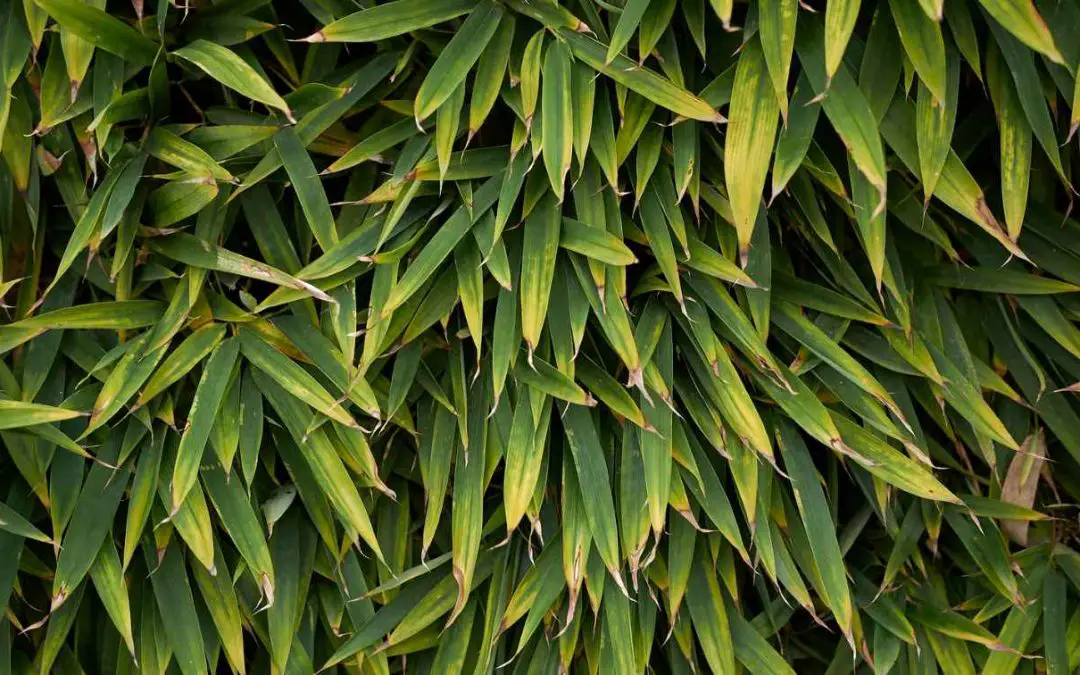Bamboo plants are pretty easy to grow. In fact, some people think that bamboo grows too easily, and they have a hard time removing it. But as with any plant, you can run into problems. Sometimes the bamboo just doesn’t look 100 percent happy. One of the most common symptoms that gardeners encounter is that the bamboo leaves start to turn yellow or brown, instead of luscious green. Why does this happen?
Yellow leaves on a bamboo plant are a common problem that can have several different causes. In most cases, the discoloration has something to do with the watering, nutrients or sunlight. The bamboo is probably getting too much water, or not enough. It could also be too much fertilizer, or else not enough. Too much direct sunlight might also damage the leaves in the summer. Be aware that bamboo typically drops its leaves in the spring, as the new growth begins, rather than in the fall.
NOTE: This article first appeared in May 2021, most recently updated in February 2023.
Bamboo leaf discoloration
When the bamboo leaves turn from healthy green to pale yellow or brown, it’s probably the most common sign of stress. It’s so common in fact, that almost any problem the plant could have will result in this symptom. But it’s usually not a serious problem, and in some cases, it’s not a problem at all.
A lot of novice bamboo growers worry when they notice that their plants are dropping leaves in the springtime. This is actually normal. Unlike deciduous plants and trees that lose their leaves in the fall, most species of bamboo are evergreen. But when the fresh growth starts in spring, the new leaves replace the old ones, causing them to lose their color and fall.

Additionally, there is some natural variation among bamboo species. And with more than 1,400 species of bamboo to keep track of, the various shades of green can be innumerable. And many interesting species actually have striped leaves, a mix of green and yellow or green and white.
But if you observe your bamboo on a regular basis, it should be easy to tell if the color is changing. Pay especially close attention to the newest leaves, which should always have the most vibrant color. Older leaves might naturally lose some of their color with age. But when the tips of the leaves are turning yellow and brown, you could have a problem.
Other signs of bamboo stress
While you’re at it, be on the lookout for leaf curl. If you notice the leaves curling upward, along the length of the leaves, this is another very common sign of stress. It usually has to do with too much or too little water.
If you correct the watering of your bamboo, either by reducing or increasing the amount, the leaf curl issue will generally go away pretty quickly. Not so with the discoloration. Once the leaves lose their vitality and turn to yellow or brown, the color won’t come back. You’ll have to look at the newest growth to check the color.
Watering issues and bamboo leaf health
Overwatering and under-watering are the two most frequent issues with most house plants, and bamboo is no exception. But of the two, overwatering is far more likely. A lot of people think bamboo needs a lot more water than it really does. They imagine it growing around swamps, ponds, or Southeast Asian rice paddies.
In fact, leaving a bamboo plant in standing water is about the surest way to kill it. If the water does not drain after a few days or a week, the roots will get waterlogged and begin to rot. So check the soil and dig a few inches down to see if it’s wet.
Bamboo likes to be moist, but not soggy. And the dirt should be allowed to dry out or drain between waterings. Twice a week is usually sufficient. And because bamboo roots are pretty shallow, they don’t need long, heavy watering. Just make sure the plant has good drainage.

Insufficient watering can also be a problem. So if you rely on a drip line, make sure it’s working properly. An under-watered bamboo should recover quickly, once its thirst is quenched. An overwatered plant with soggy, rotting roots will have a harder time bouncing back.
Potted bamboo will dry out faster and require more frequent watering. More importantly, bamboo pots have a tendency to get root bound. When this happens, the roots can get too impacted for the water to penetrate. This results in a very thirsty and overall unhealthy plant. Repot as soon as possible.
Proper fertilization of bamboo
Lack of fertilizer won’t kill a bamboo plant, but it will certainly grow bigger and brighter with regular feeding. Bamboo prefers a mix that’s high in nitrogen. Any fertilizer intended for grass is fine for bamboo. But I generally prefer to use some local horse manure or organic compost. Chicken poop is another excellent additive, with more nitrogen, phosphorus and potassium than any other manure. Any of these can be added a couple times a year.
If you haven’t fed your bamboo in the last year or so, and the leaves are losing color, it’s most likely a nutrient deficiency. On the other hand, if you just recently fertilized, it’s possible that the mix was too strong, causing the leaf tips to turn brown. In time, the plant should recover, and vibrant foliage will return.

Sunburn on bamboo leaves
As for light requirements, there’s also a wide variety among bamboo species. Some species do much better in the shade, and full sun will cause leaf damage. Always research your bamboo species well before planting it. Different plants have different needs, and you want to have yours in the ideal location for optimal results. Sometimes you can examine different sides of the plant to see if there’s more discoloration on the sunny side. If so, you’ve probably identified the problem.
You should also avoid spraying the bamboo and getting the leaves wet in the middle of the day. When the water droplets magnify the sunlight, this can burn the leaves. It’s safer to water at the base of the plant. If you want to spray the plant, which is a good idea once in a while, do so in the early morning or the evening, when the sun is low.
Further reading
If you enjoyed reading about bamboo maintenance and what to do when the leaves turn yellow, you might also be interested in some of our other in-depth articles.

























